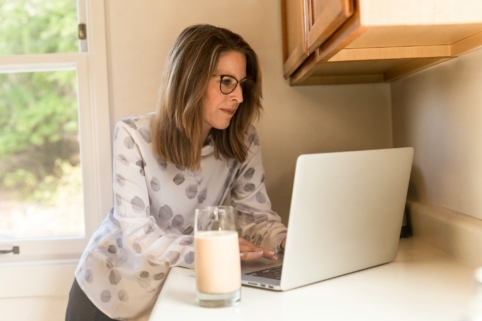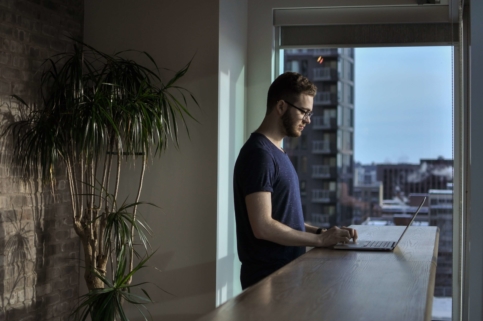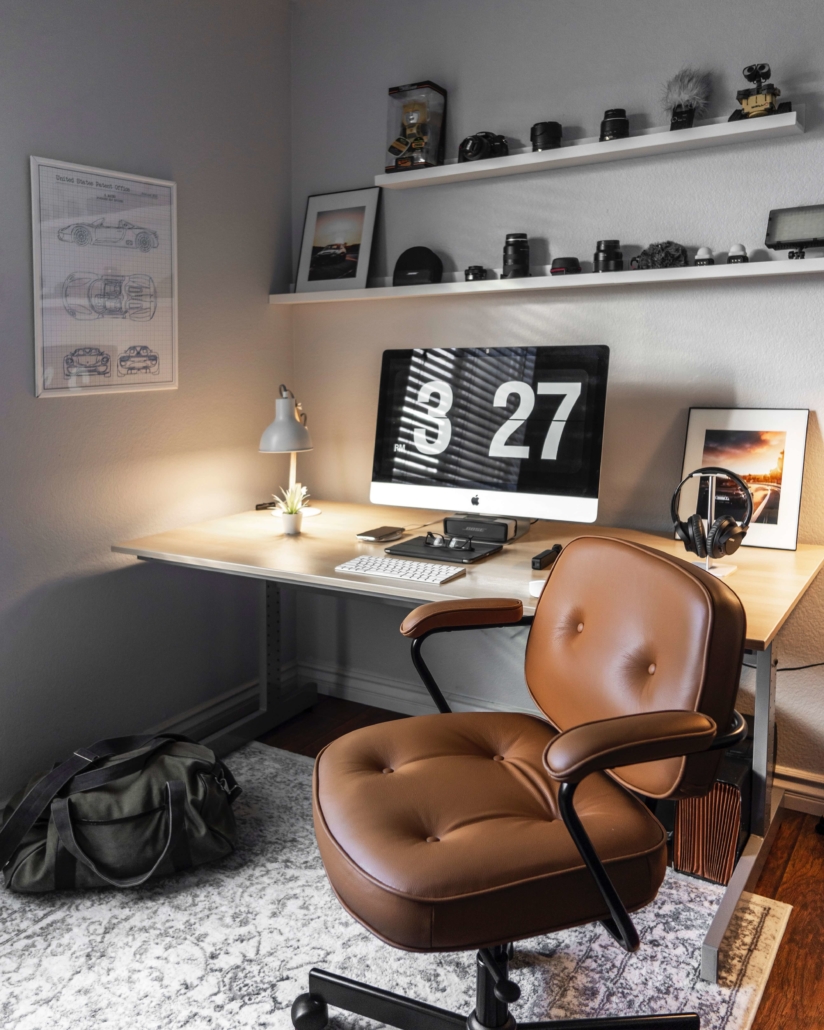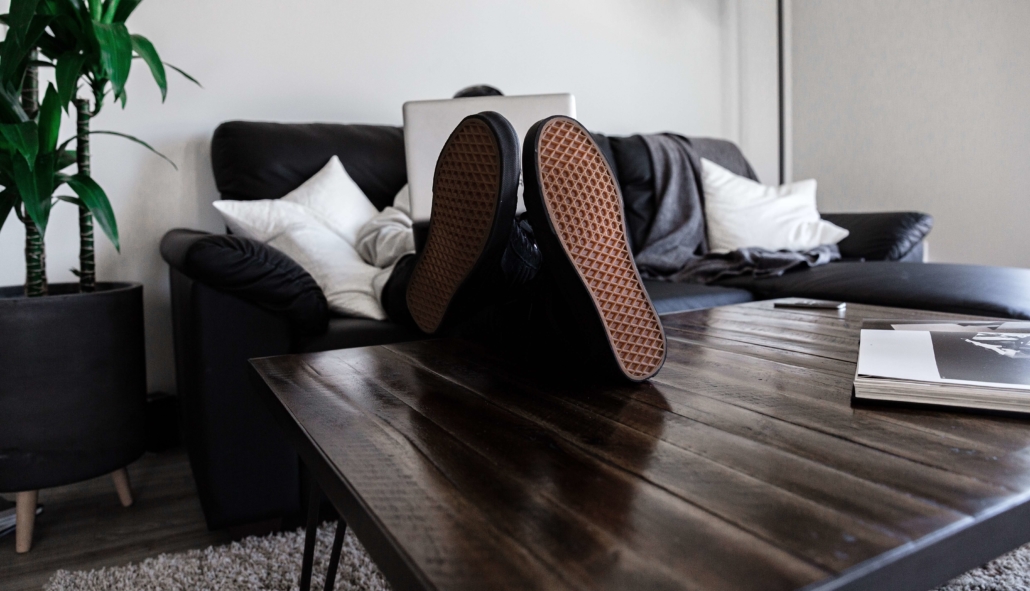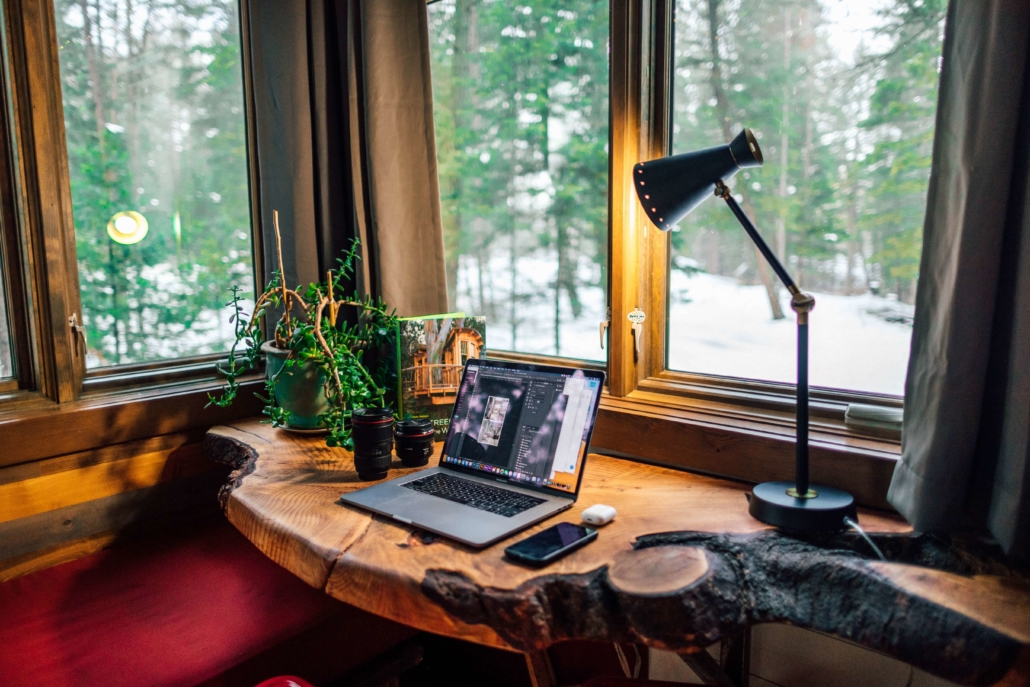Remote work has taken off in recent years as an overall trend. But with the current coronavirus pandemic, tons of people are sent home to work remotely for the foreseeable future.
Even when going to coffee shops and libraries to work is an option, we live at a time where it’s good practice to have a designated home work space. Working from home is cheaper than going to a cafe or driving to a library, and who knows? You’ll likely have a time again in your life (such as staying home during a blizzard or with a sick kid) when it makes sense to work remotely.
But if you’re looking at your studio apartment or 3-bedroom house with kids’ toys everywhere and are wondering how to make a home office possible, fear not. We’ve got you covered.
If remote work is for 2+ weeks, designate a space for work.
When working remotely is super short-term (2 weeks or less), you probably don’t need to overhaul your home for the sake of an office. But no matter the amount of time you’re working from home, it’s good to set up a designated work space.
How to do this:
Where’s an area of your home that you could take a phone call without disruption? A room with a door that you can close is the best option (particularly if you have kids at home). If that’s not possible, find a quieter area where you can set up a flat surface for working. In a place where you share walls with neighbors, maybe go to the wall where your neighbor is the quietest.
In this designated space, it’s also good to remove distraction as much as you can. Interestingly enough, one of the biggest distractors is if your space is near the fridge. The second you get bored, it’s way too easy to get up and find a snack or beverage and it can be a challenge to refocus after that.
Don’t forget — just as you leave your desk at the end of the work day, leave this space too. Creating distance between your work and your home is essential for your mental health, especially when the two spaces coexist.
Try to be as ergonomic as possible.
As great as working from the couch sounds, your back definitely disagrees. Keeping good posture is sometimes easier at work when you’re forced to be at a desk; being in the comfort of your home is a different story. Considering office ergonomics makes all the difference for your body and overall health.
How to do this:
Ergonomic Ideas That Cost $0
- Take frequent breaks (at least once an hour) to get up and move away from screens.
- Follow the 20-20 rule for vision — for every 20 minutes of work, look away from the screen for 20 seconds.
- Look up yoga poses or stretches that specifically help your back, neck, shoulders, and wrists.
- Spend 30-45 minutes over lunch taking a walk, stretching, or doing yoga.
Ergonomic Investments
- Buy a standing desk.
- Purchase an ergonomic chair.
- Invest in physical therapy at-home tools (such as foam rollers).
- Buy a headset so you can walk hands-free while taking a call.
For the things that cost money, you might be able to write them off as tax deductions, or your company may consider reimbursing you. Keep receipts just in case!
Don’t overlook the lighting.
Working in offices with bright overhanging lights can give anyone a headache, but working in a dark, dimly-lit basement isn’t ideal either. Lighting makes a huge difference in our work day, whether we realize it or not. It’s important to create a space with ideal lighting — this impacts everything from our eye strain to our mood!
How to do this:
Download f.lux for free on your laptop — it adjusts your screen to warmer tones — or get blue screen glasses. You can also put a warm lightbulb in a lamp to set an equally warm tone to your workspace. If working near some windows, save on electricity by turning off lights and opening up the blinds for natural lighting.
Create boundaries between work and home.
It is extremely easy to “just keep working” when you work from home. There’s always something more to do, and it’s challenging to separate your work and home when they’re one in the same.
How to do this:
Use an online timer to track how many hours you work (if you don’t already have set hours). Even if you have set hours, still use a timer to remind you to take breaks, a lunch, etc.
Additionally, decide on a time that you’re going to be done for the day and stick to it, as hard as that can be!
Working remotely for the long haul? Build an office (or find a home that has one).
If working remotely is going to be a long-term thing, it’s in your best interest to create a permanent home office. It’s not just helpful for you while living and working from home, it also adds value to your home.
Or if you’re thinking about selling and don’t want to go through the trouble of adding an office this late in the game, keep that in mind before you buy. Look through some of our RH homes that have offices already in them!
Georgia
Illinois
Virginia
Wisconsin

